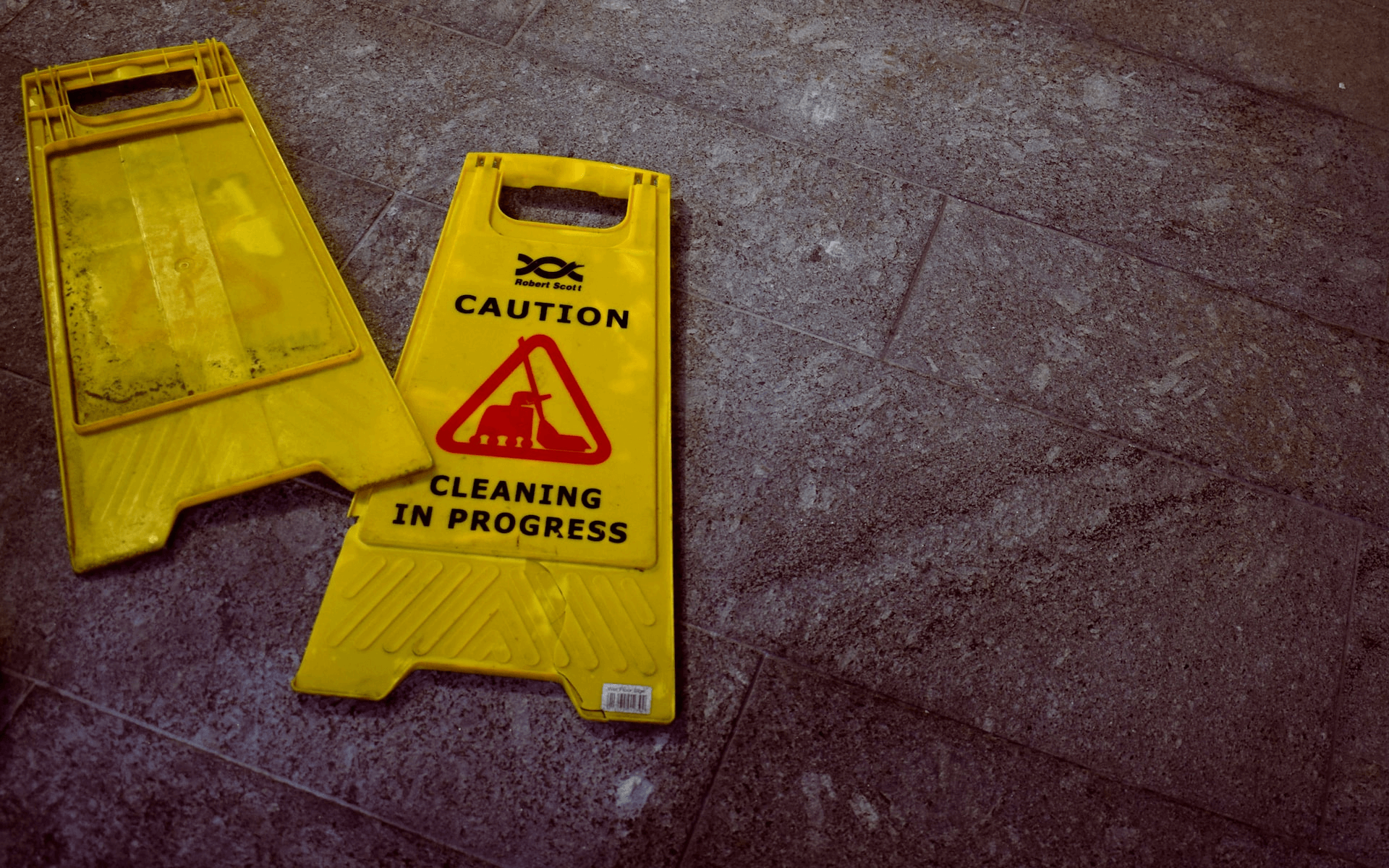Workplace incident reports form part of health and safety fundamentals in a business. Any company must have an incident reporting procedure that employees are made aware of and are easily accessible to everyone.
In this article, we will define incident reporting, explore the goals and benefits thereof, underline the importance of incident reporting in the workplace, discuss the types of incidents that might need to be reported, how to write an incident report, and how to simplify existing reporting procedures.

Defining an Incident Report
An incident report officially records any facts related to something that occurred at the workplace. An incident can be defined as an accident or event that leads to some kind of property damage, equipment damage, or personal injury. Near misses should also be included as “incidents” that need to be reported.

What is the Importance of Incident Reporting in the Workplace?
There are five main reasons why reporting incidents is important.
It boosts overall well-being
When employees are comfortable with incident reporting it is a sign that companies are committed to the safety of their customers and staff. This improves how the staff works together, their productivity, and their overall well-being.
Reporting incidents can protect companies
When there is a lack of incident reporting it can put a company at risk. In most parts of the world companies are held liable when an incident transgresses health and safety laws. Keeping track of how an incident was addressed, and providing proof of effective investigations can be beneficial to a business in this case.

It saves time and resources
When a workplace incident occurs it can often result in either costs or loss of time. When injuries are involved the costs of compensation can be quite high. Regular incident reports can save time and money as they can help businesses improve on any health and safety issues that might already exist.
It can help to improve other safety measures in the workplace
Incident reporting is a safety measure in itself. Risk assessments and incident reports can both identify potential hazards in the workplace. Even when a business strives to maintain a healthy working environment, incidents can still occur.
When a near miss or incident occurs it highlights imperfections in preventative measures. It also helps to create a detailed log of steps that were taken to improve after each incident report.
It helps to prevent more serious accidents
Through all of the previous steps discussed it becomes clear that preventing incidents can help a company avoid more serious incidents and thus improve their workplace safety.

What are the Types of Incidents that Need Reporting?
Each workplace incident reporting process is expected to record at least four kinds of incidents:
Awareness events
Where there are risks employees need to be notified in an attempt to avoid potential incidents. They need to learn the safety measures associated with risks in their jobs or workplace.
Some workplace incidents need to be reported to external authorities, especially when injuries are involved. For example, in the UK, any cases of injuries sustained (as per the reportable injuries list) need to be reported under the Reporting of Injuries, Diseases and Dangerous Occurrences Regulations 2013.
Adverse events
This type of incident involves medical devices, vaccines, or medicines, that might have been used to treat an employee. Adverse events are not related to existing disease, and rather refer to unintended harm caused by omission or commission of treatments or procedures.
Near misses
This refers to a situation, accident, or incident that has the potential to cause harm or to damage company property. This does not include situations where something actually did happen.
Unexpected events
This refers to something that causes serious psychological injury or non-fatal physical injury. Under certain circumstances, fatal injury can be included in this category. Damage to company property is also included. For example, fires, theft, natural disasters, vehicle accidents, slips, etc.

When Do You Need to Report an Incident?
A workplace incident report needs to be completed as soon as possible following an incident or near miss. Companies should have an incident report form that everyone can access when an incident occurred. The sooner incident reports are made after the incident occurred, the better. Many employers have stipulated time frames for reporting workplace incidents.
How to Write an Effective Incident Report
When we report incidents, we need to remember that a workplace incident report certain objectives:
- Boosting the overall well-being of staff.
- Protecting the company.
- Saving resources and time.
- Improving all health and safety measures.
- Prevention of more serious accidents.
These objectives can help guide staff through writing an incident report and knowing what further details to include. Having incident report examples or incident report templates for employees to review can also be helpful.
An incident report template should include the following sections:
- Type of Incident
- Location (where the incident happened)
- Was it an offsite location?
- Was it a specific location on-site?
- The time and date when the incident occurred.
- Names of people directly affected, or almost involved when a near miss occurred.
- Names of witnesses.
- Names of the supervisors in charge of parties involved.
- A detailed description of any injuries suffered.
- The following incident details are required:
- Witness statements
- Statements from each person involved
- Observations of safety equipment or procedures that were used.
- Anything out of the ordinary occurring before, during, or after the incident.
- Results of the incident.
- Details related to the sequence of events.
- Any details related to psychological/medical treatment that people received after the incident:
- Were emergency services called? Why, or why not?
- Treatment undertaken for the injury. Also whether it was a minor injury, or something more severe.
- How the area that the incident occurred in was treated, cleaned up, and controlled.
- A hind-sight analysis of the facts related to the incident
- The causes of the incident.
- Health and safety breaches that might have led to workplace accidents or similar incidents.
- Hazards that were identified and can now be addressed.
- How hazards will be handled and mitigated.
- Photographs
When writing an incident report, keep these tips in mind:
There are certain things to keep in mind when writing an incident report. How it is written will affect how the investigation team views the report.
Write in a neutral third-party voice unless you are quoting people directly. Keep your writing factual and include all relevant information without making emotional statements. Provide supporting evidence and draw attention to this evidence within your report.
Remember that the objective is workplace safety and occupational health, so do not place blame on anyone. Include all your specific details, but keep them as concise as possible. Once the workplace incident report is complete, get all affected and involved parties to sign the report. This confirms that information provided is accurate and that the report is valid.

Keeping an Incident Report Log Book
All incident reports should be kept in a secure location, and a log book of these incident reports needs to be available to inspectors and managers at all times. The log book must be clear and well organized. Most countries have laws that require businesses to keep an incident report log book containing details related to an incident and instructions on where the full incident report can be located.
In addition to its legal requirement, an employer might find other benefit in keeping a log book as well. It is also a requirement of basic safety regulations in a company. It shows that an employer has taken all reasonable steps to support an injured employee, prevent future accidents, and improve safety training in the workplace.
Employees can learn from studying a log book and the corresponding incident report. It also ensures that risk management can be approached proactively, and that the company can improve its response to future incidents.

Streamlining the Process of Reporting and Recording Incidents
It is not uncommon for employees to neglect incident reporting or to make their reports incorrectly. Most often the reason for this is that an incident report can be time-consuming and arduous. This is especially true for a particularly minor incident.
Digitalization has actually simplified the creation of incident reports and makes the process much faster as well. A simplified process makes creating incident reports less daunting for employees and thus increases the likelihood that incidents will be reported no matter how minor they might have been, which is the ultimate goal. Furthermore, it has simplified record-keeping practices as well.
There are a number of professional services which supply specialized software to keep your incident report process as smooth and efficient as possible. Incident reporting software tends to come with a step-by-step guide and customer service agents who can assist with any issues that might arise. Security breaches are rare with this type of software, and if data associated with incidents is not securely stored by a company there can be significant risks of data breaches. The needs of a company, regarding incident reports will likely vary depending on its size and industry, but it is highly unlikely that a company will ever exist that never needs an incident report form.










